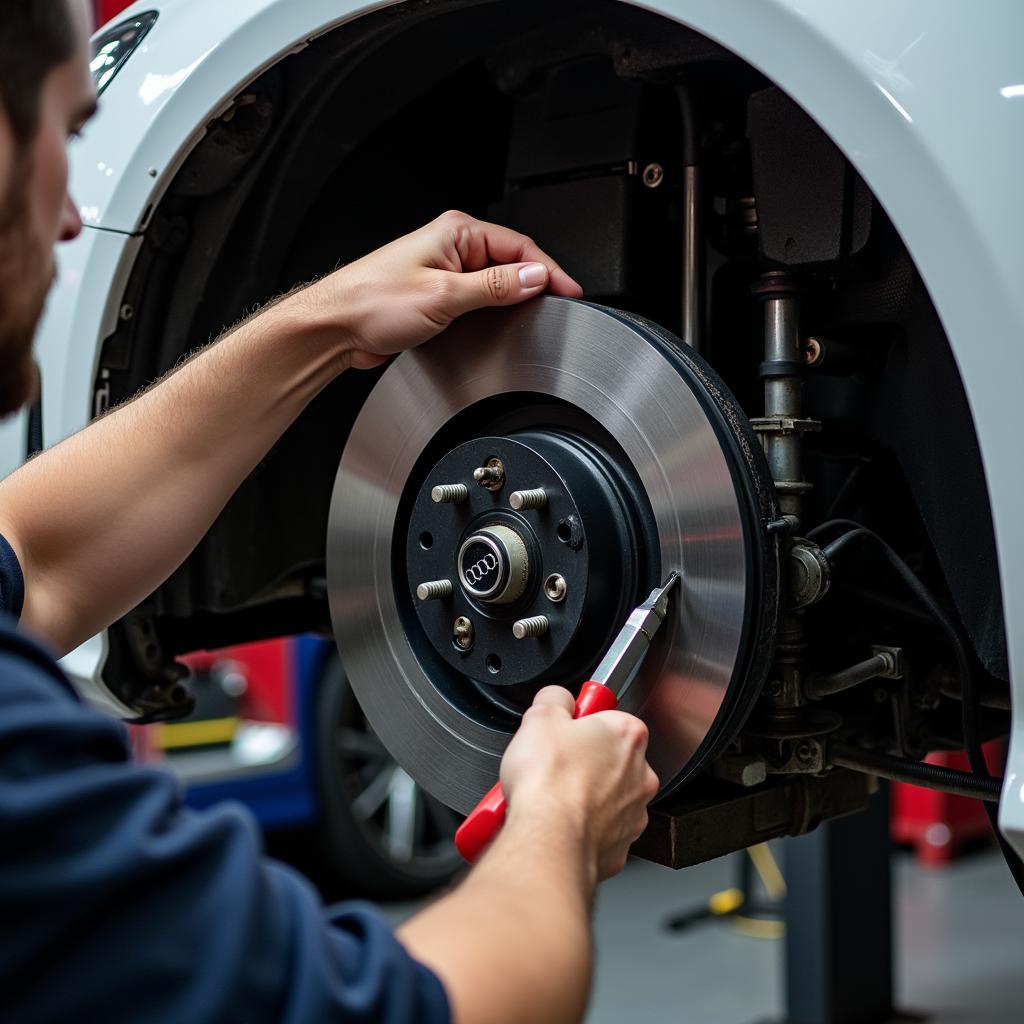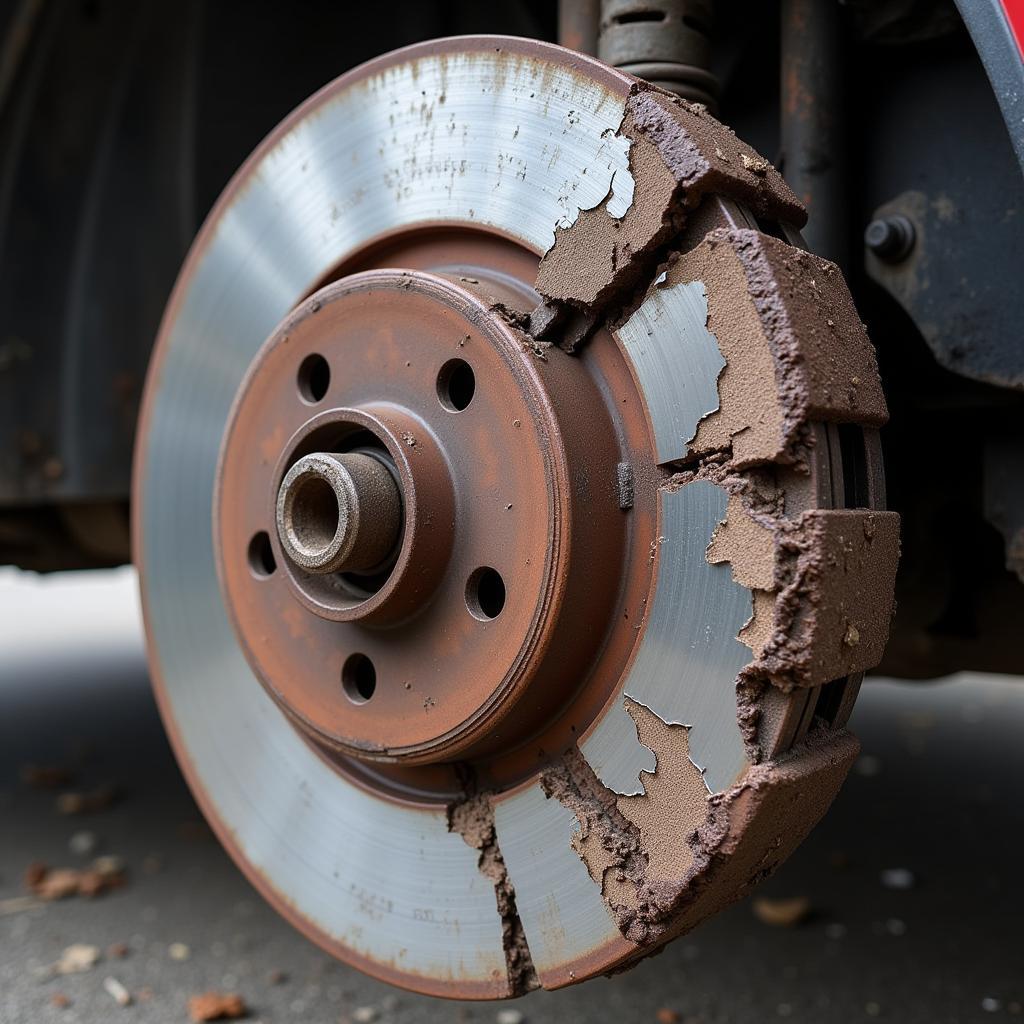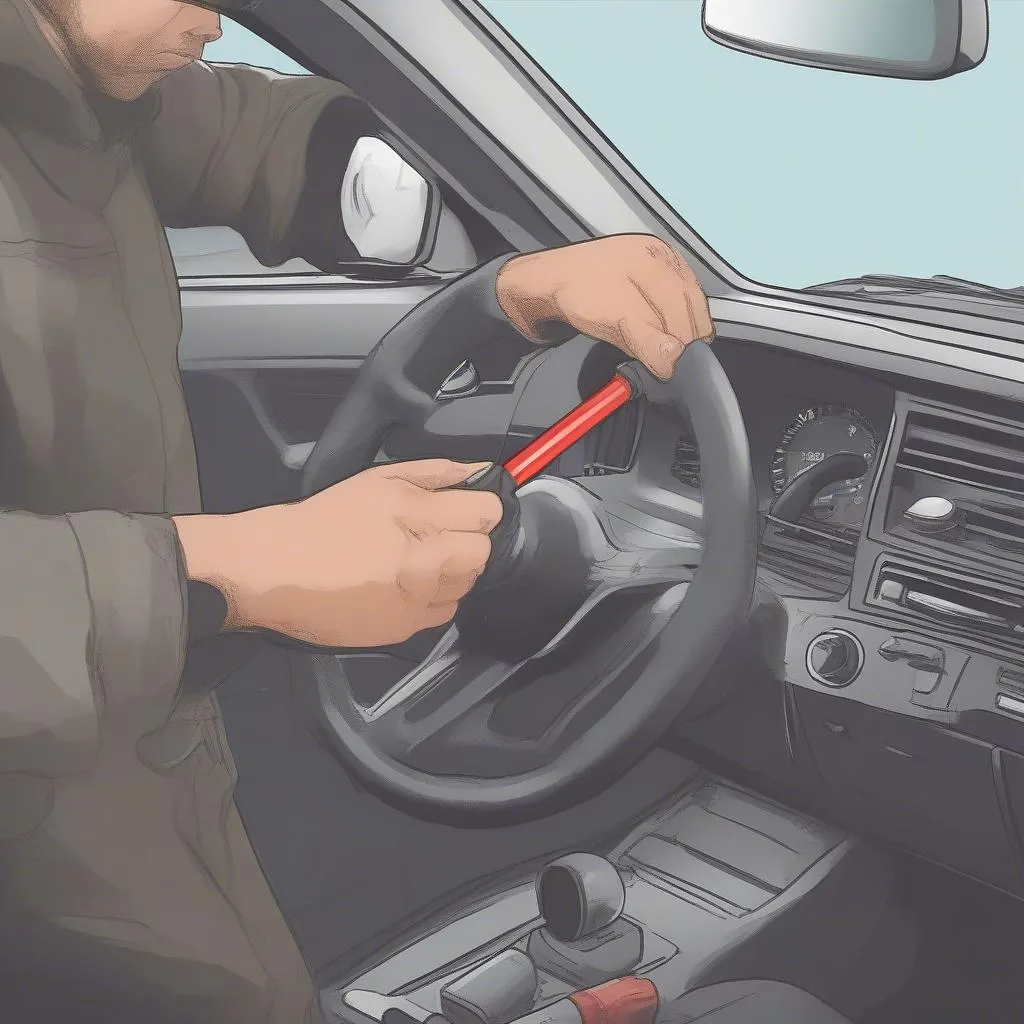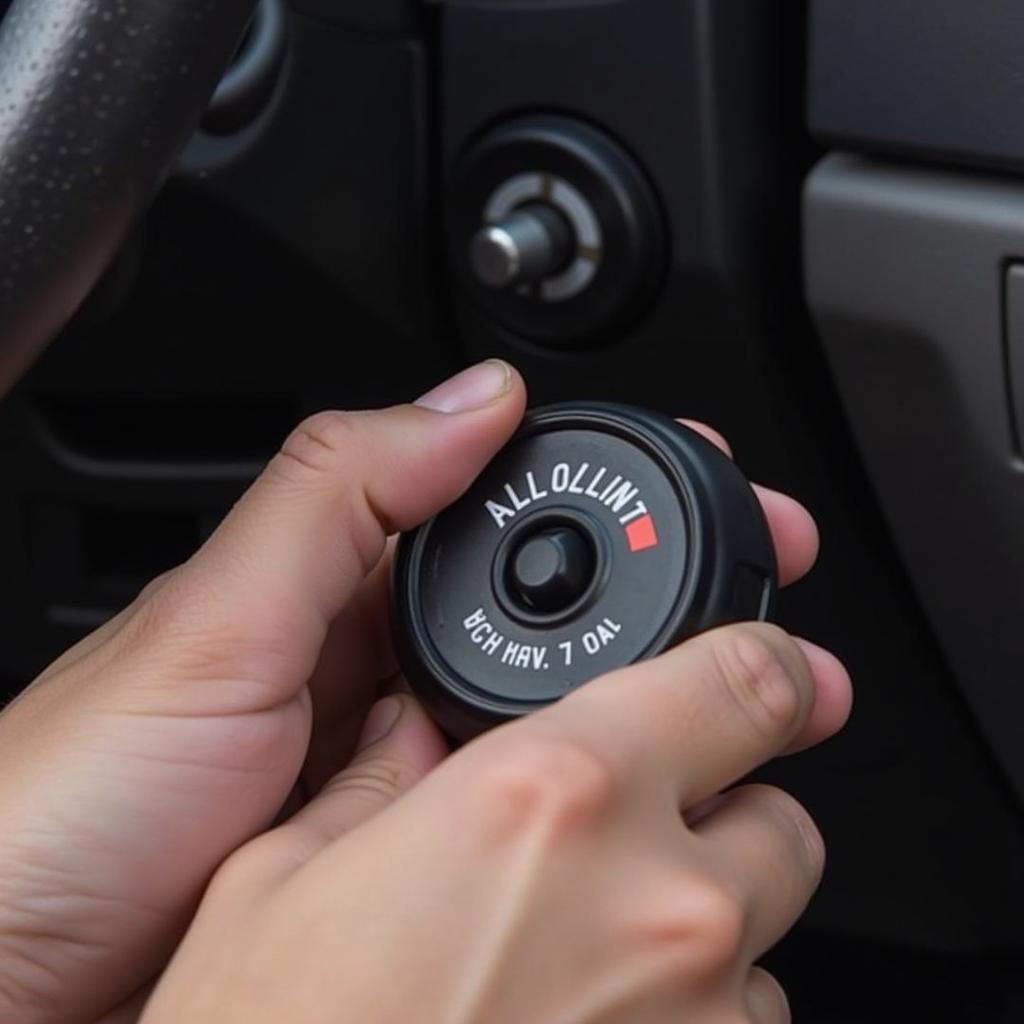Your Audi dashboard just lit up with a “rear brake pad warning” – and you might be feeling a wave of anxiety. Don’t panic. This warning is your car’s way of letting you know it’s time to take action and ensure your safety on the road. This article will guide you through understanding the warning, potential causes, and the steps to take to rectify the issue.
Understanding the Audi Rear Brake Pad Warning Light
The “rear brake pad warning” light on your Audi dashboard is directly connected to your braking system. Most Audi models employ electronic sensors within the brake pads themselves. When the brake pad material wears down to a certain point, these sensors trigger the warning light on your dashboard.
Why is My Audi Rear Brake Pad Warning Light On?
While worn brake pads are the most common culprit, several other factors could be at play:
- Worn Brake Pads: This is the most likely reason. Brake pads have a finite lifespan and will eventually need replacement.
- Faulty Brake Pad Sensors: Like any electrical component, these sensors can malfunction, triggering a false warning.
- Damaged Brake Rotor: A severely worn or damaged brake rotor can disrupt the sensor’s function, activating the warning light.
- Issues with Brake Fluid: Low brake fluid levels or air in the brake lines can affect brake pressure and trigger warnings.
- Electrical Malfunction: In rare cases, a general electrical issue within your Audi’s system could cause the warning light to illuminate.
 Audi Rear Brake Pad Warning Light on Dashboard
Audi Rear Brake Pad Warning Light on Dashboard
What Should I Do When the Audi Rear Brake Pad Warning Light Comes On?
Here’s a step-by-step guide on what to do when you see the warning:
- Don’t Panic: The warning light itself doesn’t mean immediate danger. However, it’s crucial to address the issue promptly.
- Assess Your Brakes: While driving, pay close attention to your brakes. Do you hear any unusual noises like grinding or squealing? Do you feel vibrations when braking?
- Check Your Brake Fluid: If you’re comfortable, and it’s safe to do so, check your brake fluid level. Refer to your owner’s manual for the location of the reservoir and the recommended fluid type.
- Schedule an Inspection: Whether you suspect worn brake pads or other issues, the safest course of action is to schedule an inspection with a qualified Audi technician or a trusted mechanic specializing in European vehicles.
 Mechanic Inspecting Audi Brake Pad Wear
Mechanic Inspecting Audi Brake Pad Wear
Can I Still Drive My Audi with the Rear Brake Pad Warning Light On?
While you might be tempted to continue driving, it’s not recommended to ignore the warning for an extended period. Driving with severely worn brake pads can:
- Reduce Braking Efficiency: Worn pads mean less friction material to grip the rotor, leading to longer stopping distances, especially in emergencies.
- Damage Brake Rotors: Driving with worn pads forces the metal backing plate to rub against the rotor, potentially leading to costly repairs.
- Compromise Safety: Ignoring the warning puts your safety and the safety of others on the road at risk.
 Damaged Audi Brake Rotor from Worn Brake Pads
Damaged Audi Brake Rotor from Worn Brake Pads
Audi Rear Brake Pad Replacement: What to Expect
During a brake pad replacement, a qualified technician will typically:
- Inspect the Entire Braking System: This includes checking the rotors, calipers, brake lines, and fluid levels for any signs of wear or damage.
- Replace Worn Brake Pads: New brake pads, compatible with your specific Audi model, will be installed.
- Resurface or Replace Brake Rotors: Depending on their condition, the rotors may be resurfaced to ensure smooth contact with the new pads or replaced entirely if necessary.
- Check and Top Up Brake Fluid: The brake fluid level will be checked, and the system will be bled to remove any air bubbles, ensuring optimal brake pressure.
Audi Rear Brake Pad Warning: FAQs
Q: How often should I replace my Audi’s rear brake pads?
A: “There is no one-size-fits-all answer to brake pad lifespan,” says Master Technician, Peter Schmidt. “Driving habits, road conditions, and even the type of brake pads you use can all factor into their wear and tear. It’s always best to consult your owner’s manual for recommended service intervals and have your brakes inspected regularly by a professional.”
Q: How much does it cost to replace Audi rear brake pads?
A: The cost can vary depending on your Audi model, the type of brake pads used (genuine Audi parts or aftermarket brands), and labor rates at your chosen repair shop.
Q: Can I replace my Audi’s rear brake pads myself?
A: While it’s possible to replace brake pads yourself, it’s generally recommended to leave this task to qualified professionals.
Taking Action: Prioritizing Your Audi’s Safety and Performance
The “audi rear brake pad warning” light shouldn’t be ignored. Address the issue promptly to ensure optimal braking performance and most importantly, your safety on the road. Remember, preventative maintenance and timely repairs are always the best approach to keeping your Audi running smoothly for years to come.
Internal Links:
- Concerned about your front brakes too? Learn about the audi brake pad warning light front or rear.
- Curious about your car’s safety features? Find out if are all wheels equiped with low brake pad warning scrappers.


